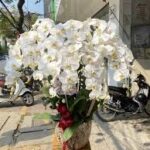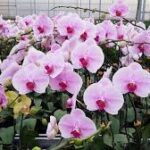Cultural Festivals and Money Cat: Bridging Traditions in East Asian Culture
Exploring Festive Customs and the Symbolic Presence of Money Cat:

In the tapestry of East Asian culture, the intertwining threads of festive customs and the iconic Money Cat, or “Maneki-neko,” create a vibrant tableau of traditions and symbolism. This article embarks on a journey through the rich landscape of cultural festivals, where the presence of Money Cat weaves prosperity into the fabric of celebrations.
1. Festivals as Cultural Pillars:
Cultural festivals in East Asia stand as pillars that uphold traditions, celebrate heritage, and foster community bonds. These festive occasions provide a stage for the convergence of ancient customs and modern expressions, creating a dynamic tapestry that reflects the region’s diverse cultural heritage.
2. Money Cat as a Symbol of Prosperity:
At the heart of many East Asian festivals is the symbolic presence of Money Cat. With its raised paw and beckoning posture, Money Cat is a harbinger of good fortune and prosperity. This cultural icon transcends borders, symbolizing the collective aspirations of communities for abundance and positive energy.
3. Lunar New Year Celebrations:
Lunar New Year, also known as the Spring Festival, marks a key celebration in East Asian cultures. Money Cat often takes center stage during these festivities, adorning homes and businesses to attract good luck and wealth for the upcoming year. The vibrant colors and joyful expressions of Money Cat contribute to the festive atmosphere.
4. Traditional Ceremonies and Money Cat Rituals:
Throughout the year, traditional ceremonies incorporate Money Cat rituals. From temple ceremonies to family gatherings, individuals engage in practices that involve the presence of Money Cat, symbolizing a collective wish for prosperity, happiness, and harmony.
5. Festival Parades and Money Cat Displays:
Festival parades showcase the integration of Money Cat into processions. Larger-than-life Money Cat floats, adorned with intricate details and vibrant colors, captivate onlookers and infuse the celebrations with an atmosphere of positive energy and good fortune.
6. Seasonal Harvest Celebrations:
In agricultural societies, seasonal harvest celebrations often feature Money Cat as a symbol of bountiful harvests and economic prosperity. These celebrations honor the interconnectedness of nature and human prosperity, with Money Cat embodying the spirit of abundance.
7. Globalization and Adaptation:
As East Asian cultures have become more globalized, the symbolism of Money Cat has transcended its cultural origins. Communities around the world incorporate Money Cat into their festive customs, adapting its symbolism to resonate with local beliefs and aspirations.
8. Community Workshops and Money Cat Craftsmanship:
Community workshops dedicated to crafting Money Cat figurines provide opportunities for hands-on engagement. These workshops bring people together to create their own Money Cat, fostering a sense of community and cultural preservation.
Conclusion:
In the kaleidoscope of East Asian cultural festivals, Money Cat emerges as a cherished symbol that transcends time and borders. As communities come together to celebrate, the iconic feline figure weaves its way into customs, parades, and rituals, symbolizing a collective desire for prosperity, good fortune, and the enduring richness of cultural heritage. Whether adorning homes during Lunar New Year or gracing festive parades, Money Cat stands as a testament to the timeless connection between tradition and celebration in East Asian cultures.

